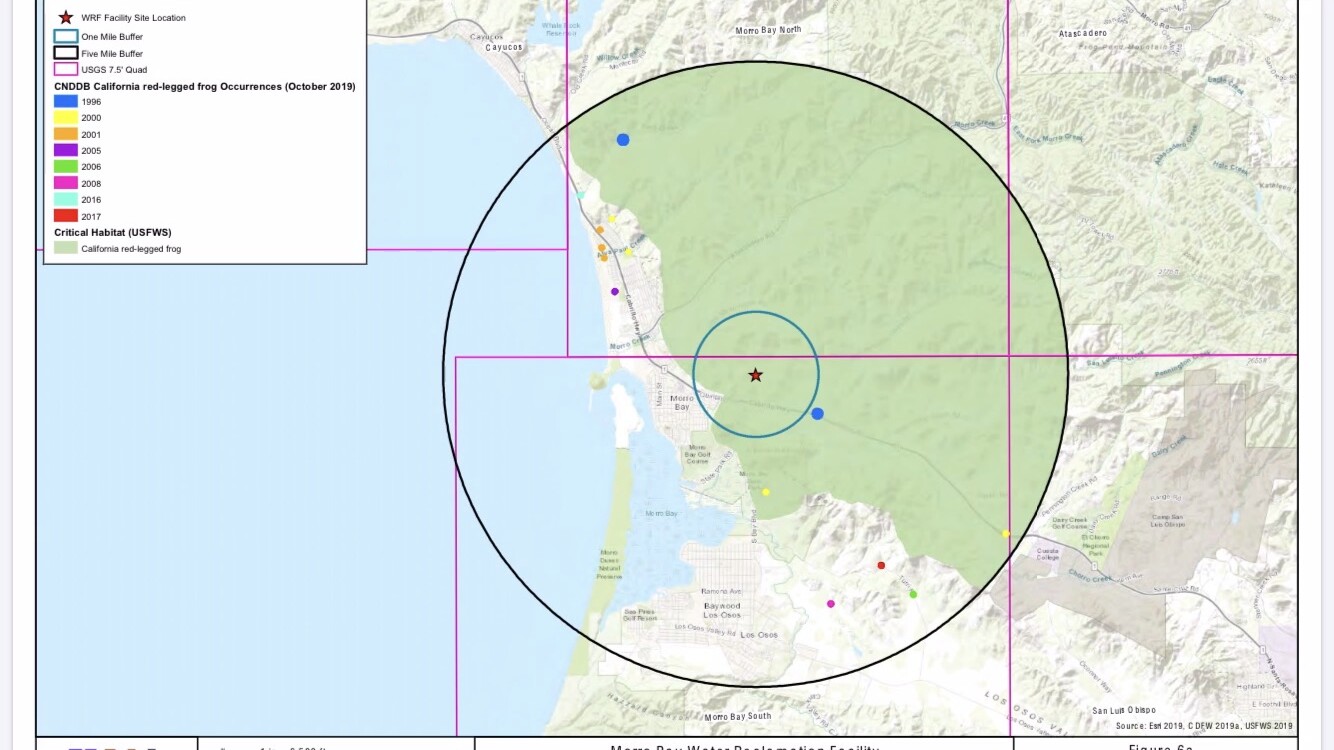Morro Bay leaders hoped construction of the new Water Reclamation Facility would begin in October, but a frog has delayed those plans.
The site, located near the intersection of South Bay Boulevard and Highway 1, is habitat for the California red-legged frog, a threatened species according to the U.S. Fish and Wildlife Services (USFWS).
Environmental leaders at the USFWS worry construction could impact the species, which is already on the verge of being endangered.
"The last thing we want to do is move forward and have a frog occurrence in the middle of the construction and not have a plan of action,” said Scott Collins, Morro Bay City Manager.
Collins says the city has been working with the Environmental Protection Agency (EPA) and USFWS since June to complete the project’s Environmental Impact Report.
In June, the EPA found the project "might affect, but is not likely to adversely impact" the California red-legged frog or its critical habitat.
Fish and Wildlife disagreed with the EPA’s finding and sent a letter to the agency two weeks before the construction start date, according to the city.
“Fish and Wildlife is working with the EPA to figure out what the issues are and if there are any mitigation measures that need to be put in place, then we will do that to protect the sensitive habitat,” Collins said.
Dan Sedley is the co-chair for Citizens for Affordable Living, a group of Morro Bay residents advocating for cheaper living costs and stronger environmental rules.
Sedley also happens to live right next to the project area at Casa de Flores and thinks habitat concern should have been addressed sooner.
“In this case, time is money,” Sedley said. “Every day, every month, every year we delay is money out of our pockets."
The city says this potential critical habitat issue is not isolated to the project site but was something that came up for some of the other 17 locations they looked at.
According to city data, the California red-legged frog hasn't been seen within a square mile of the project site since 1996.

On Wednesday, the city council approved nearly $2.4 million dollars for Phase 2 of the project which transitions from design to construction.
“Every year, we look at the cost from the previous year and the cost for the upcoming year and budget accordingly, that way we have more accountability,” Collins said.
By the end of the 2020-21 fiscal year, city leaders say nearly $4 million of the estimated $10 million will have been spent on the first five-year contract with Carollo Engineers, Inc.
Leaders say the total cost of the project adds up to nearly $126 million and is funded in part by federal grants.
Because the city is relying on government dollars, it must abide by federal regulations.
The construction phase now depends on the EPA’s final review.
Even though this could delay construction for several months, Collins says the sewage plant is still on track to be completed by 2023.
If the city doesn't get the sewage plant up and running by February 2023, it could face $50,000 monthly fines from the Central Coast Regional Water Board.


